Our production of high-quality stretch tents
At Eurostretch, we combine craftsmanship and innovation in our production of stretch tents that meet the highest quality standards.
Our production team works daily on standard sizes and custom-made solutions, ensuring your stretch tent perfectly fits the location and usage. Whether you choose a standard size or a unique special shape, you can count on a tent that is functional, durable, and fully tailored to your needs.
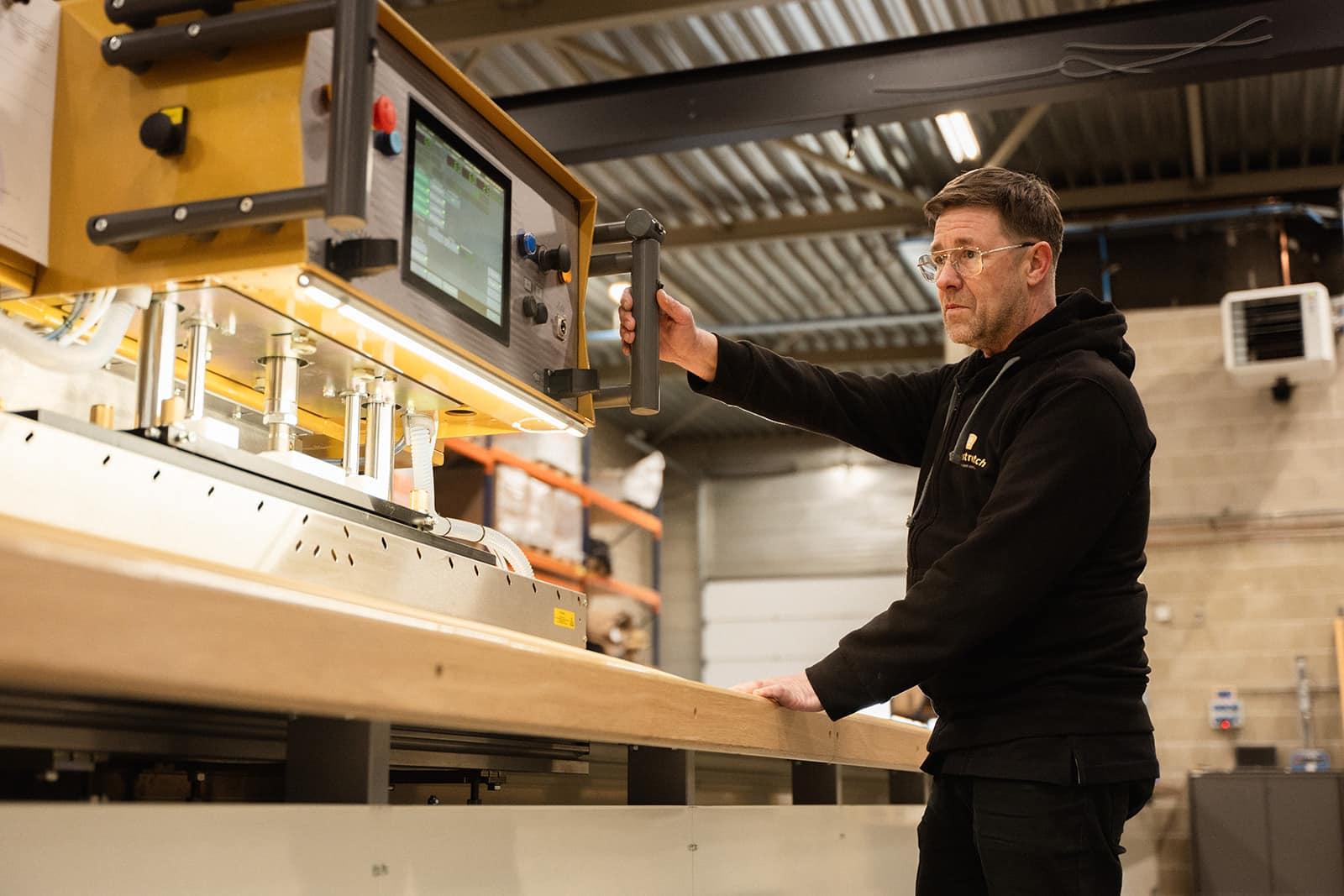
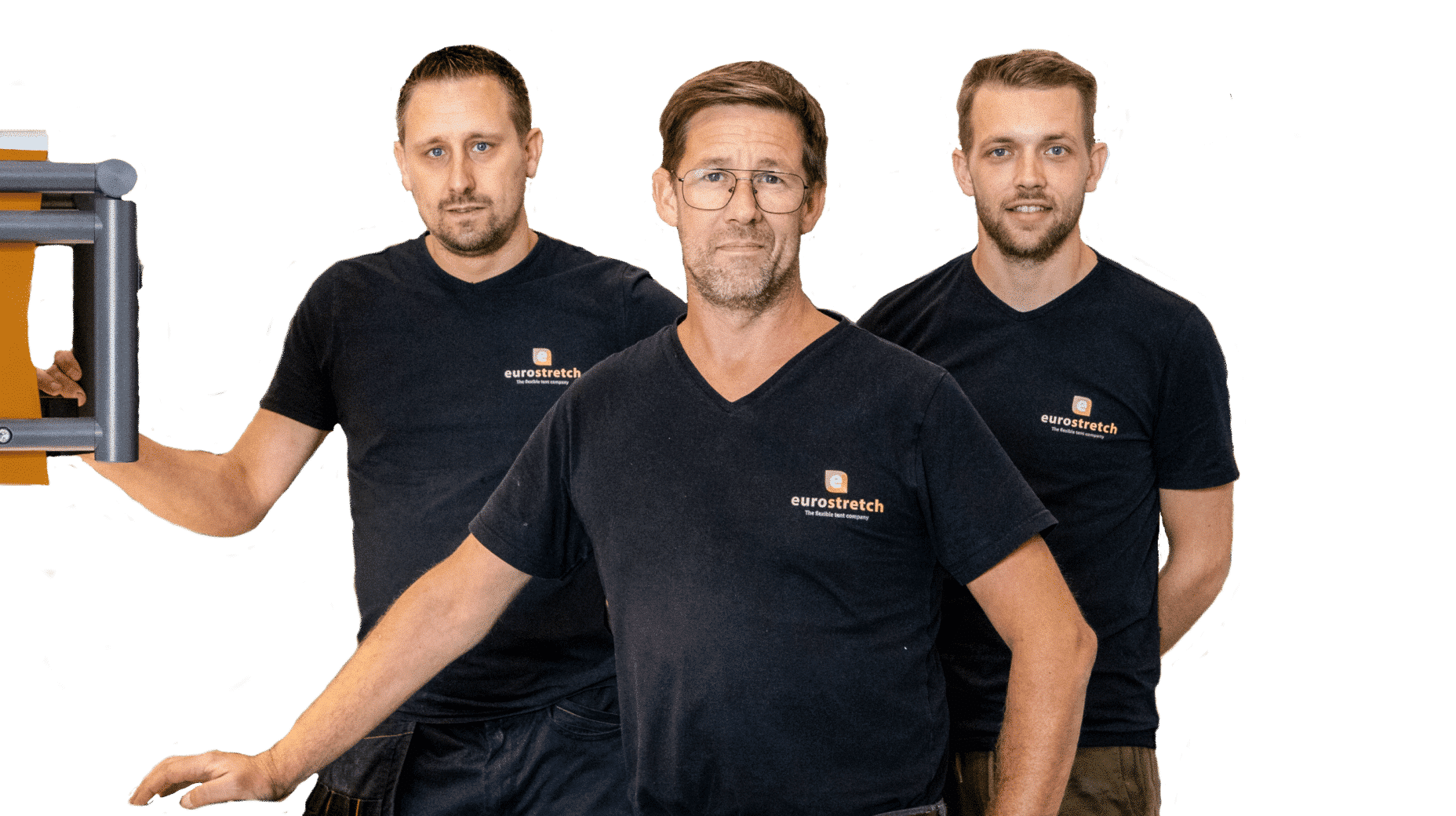
Our production process, step by step
We manage our production entirely in-house, allowing us to guarantee quality at every step. Whether you choose a standard size or require a unique custom-made special shape, your stretch tent is made with care and precision.
Below you can read more about our process:
Step 1
Stretch tent design
Our product engineer aligns your wishes and possibilities to create a unique design. This results in a stretch tent that seamlessly fits your location.
Step 2
Precision cutting of tent fabric
Using advanced cutting machines, the tent fabric is precisely cut to size. This ensures efficiency and minimises material waste.
Step 3
High-freequency welding
The tent fabric panels are joined using special high-frequency welding technology. This ensures strong, waterproof seams that withstand wind speeds up to force 8.
Step 4
Attaching the loop band
Our confection department makes the loop band and attaches it to the tent. We then finish the stretch tent down to the finest details, giving it its final shape.
Step 5
Preparing for shipment
Your stretch tent is ready for shipping. You can order a special tent bag to keep your new stretch tent in pristine condition.
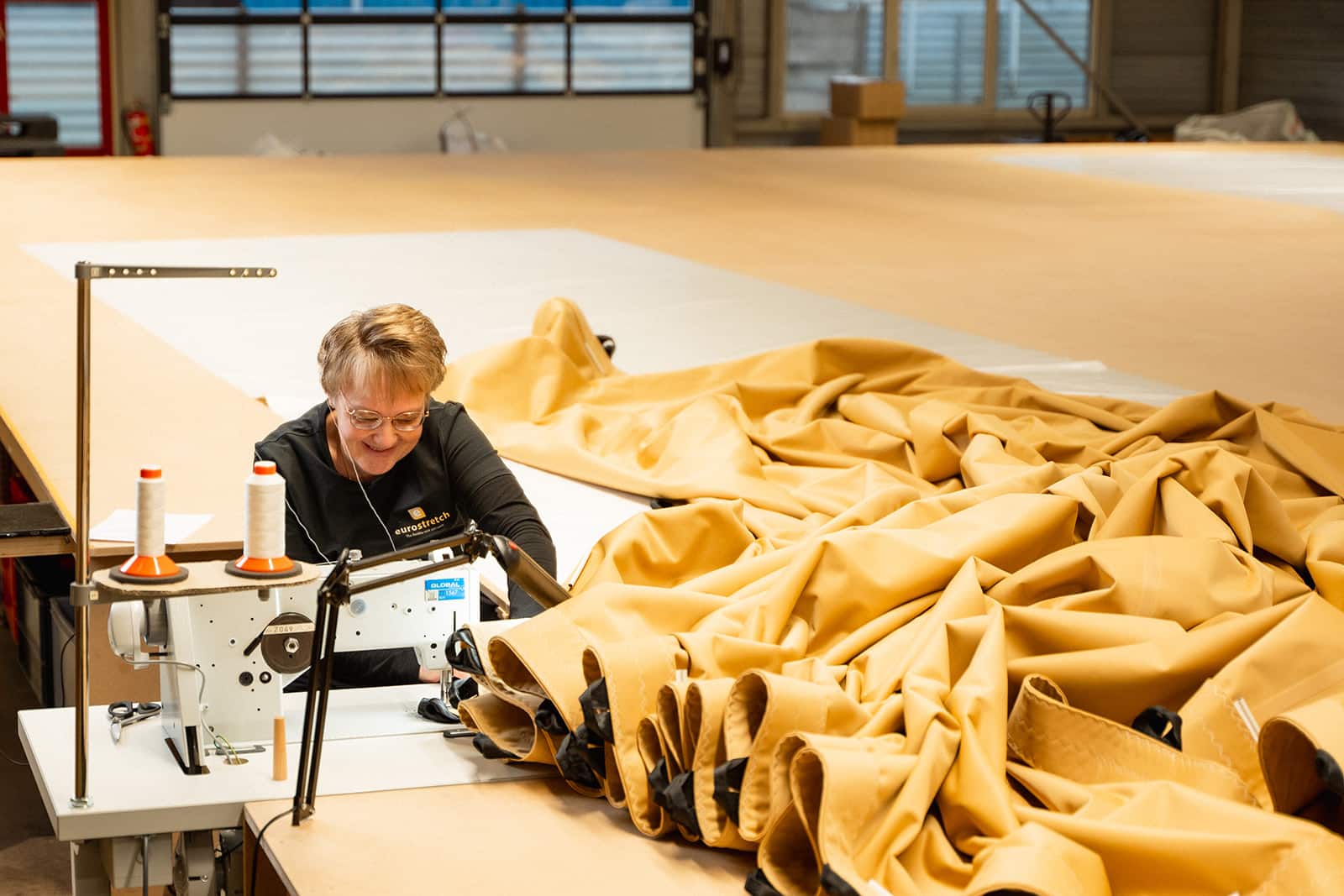
Advantages of our in-house produced stretch tents
- 1-year full warranty
- Certified European DIN standard 4102B1
- High-frequency welding for maximum quality
- Fast delivery times, even for custom-made orders
- Unique loop band for extra strength
- Less waste due to an efficient production process
Stretch tents always available from stock
We always have standard-size stretch tents in sand colour in stock. Other colours or custom-made sizes have a lead time of a few weeks. View our full range in our catalogue and request a quote directly.
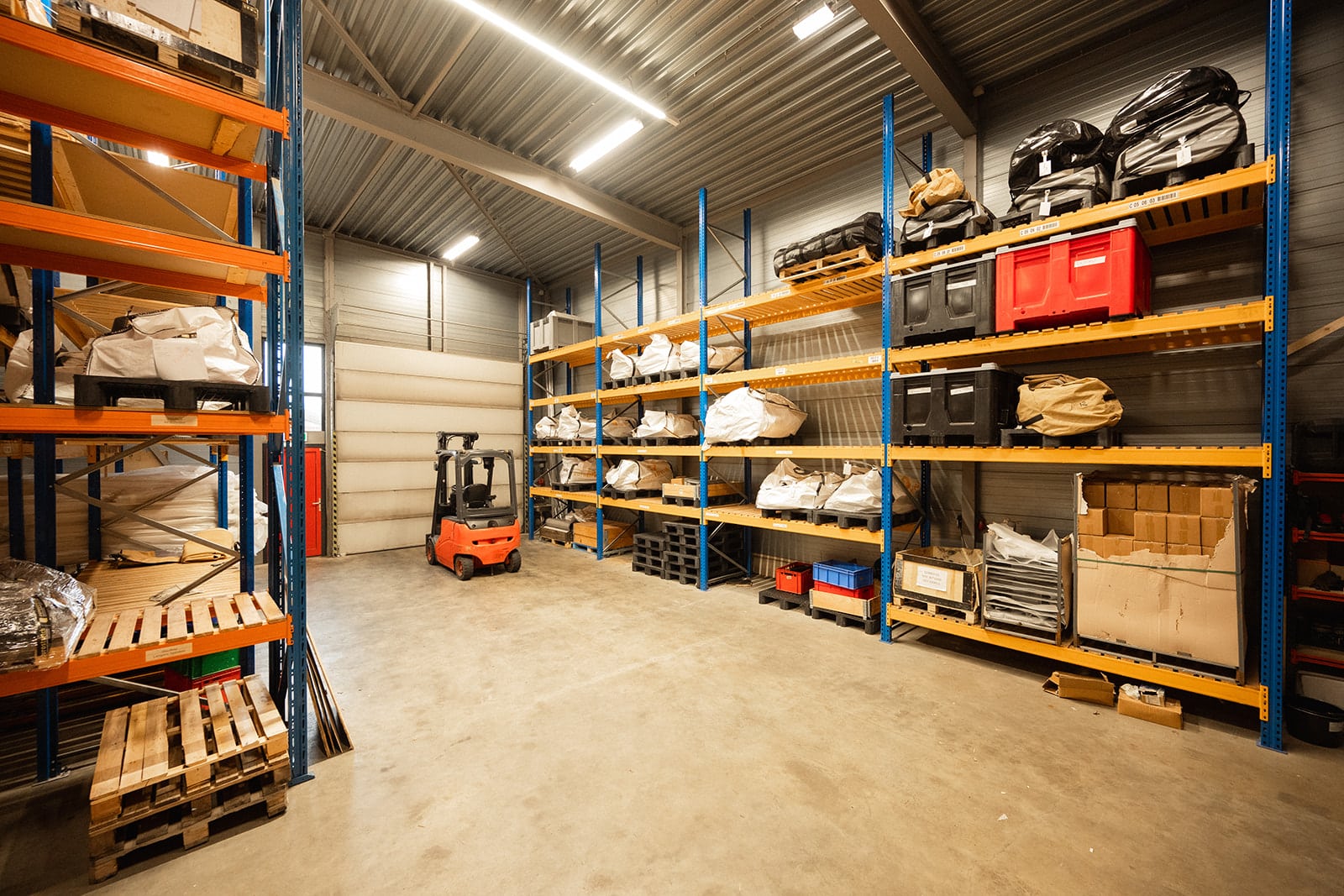
Quality in every step of the production process
We conduct quality checks at every stage of our production process. Before cutting, we thoroughly inspect the fabric for small holes or weak spots. After welding, we test the strength and waterproofness of the seams, ensuring the tent is resistant to all weather conditions.
These checks ensure that every stretch tent meets our high standards and lasts for many years.
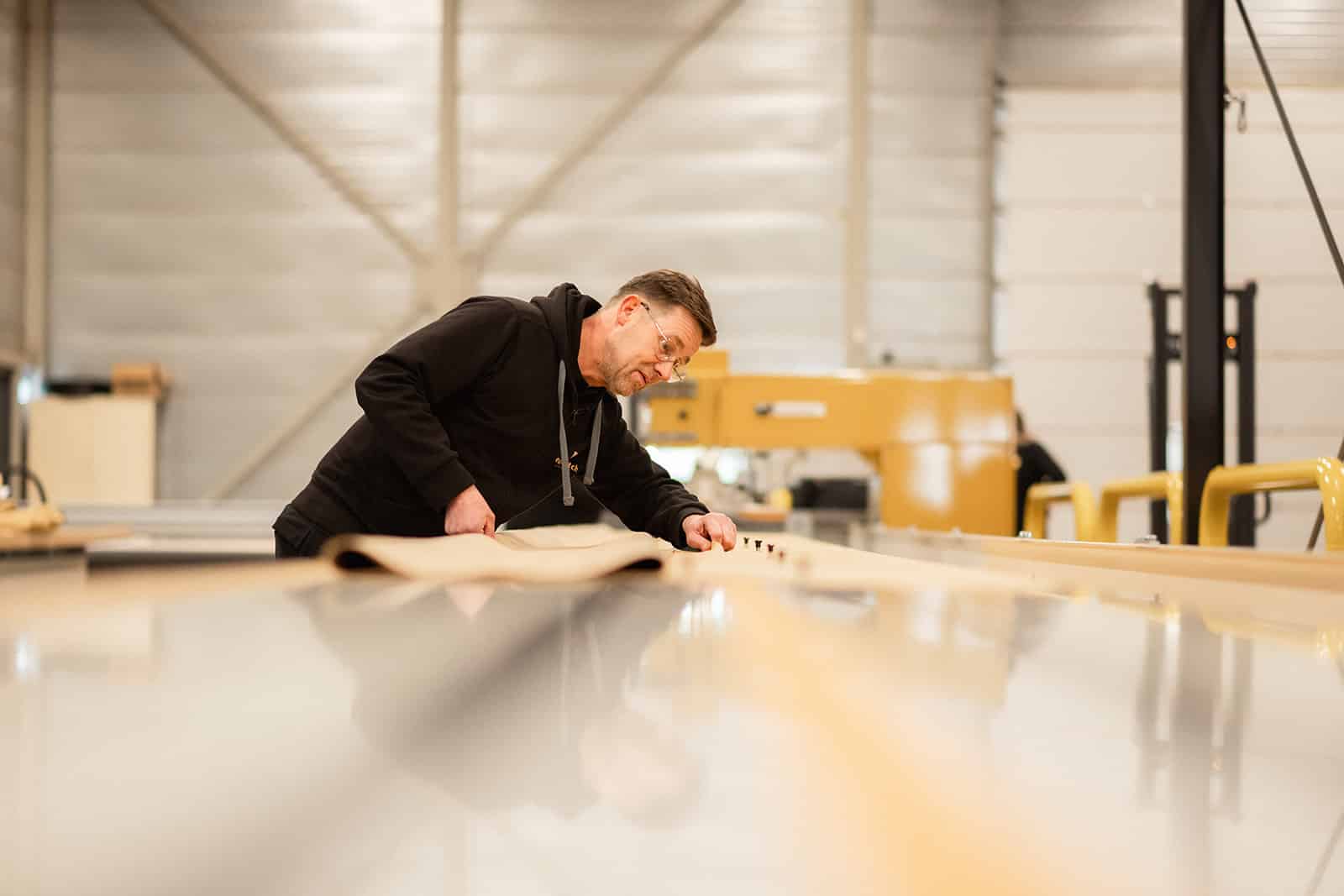
Behind the scenes
Every day, our production team works in our modern workshop in Terborg (NL) to create the most beautiful and high-quality stretch tents. Innovation and craftsmanship are at the core of our work.
Curious to see how this looks? Watch our company video for a behind-the-scenes look.

